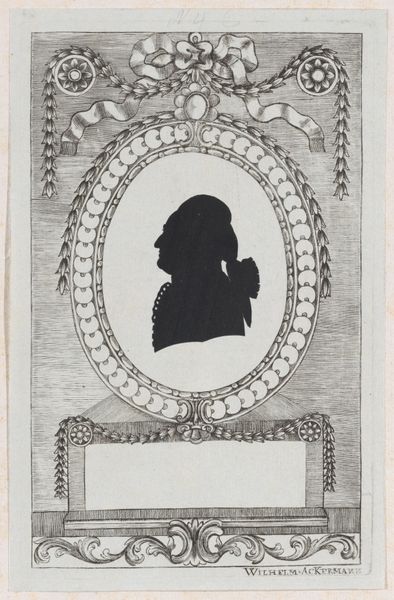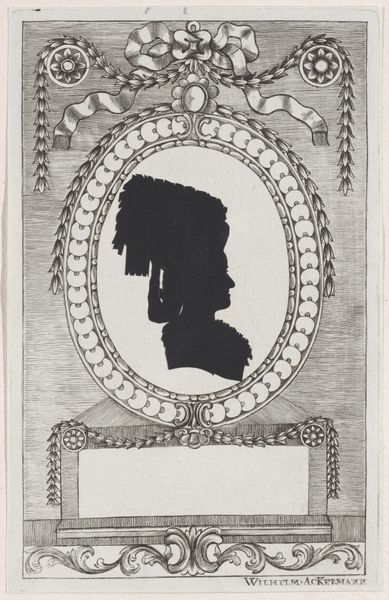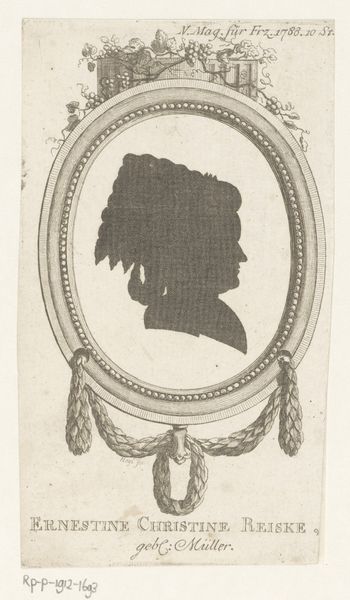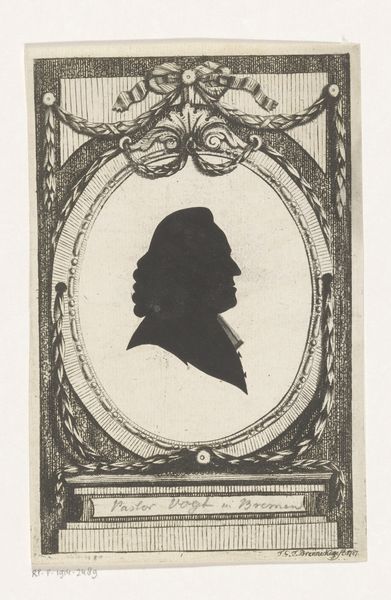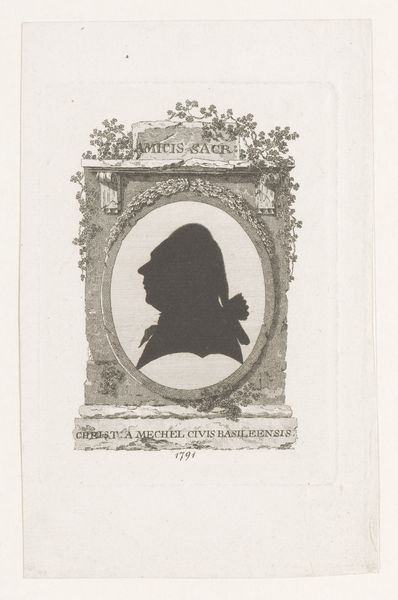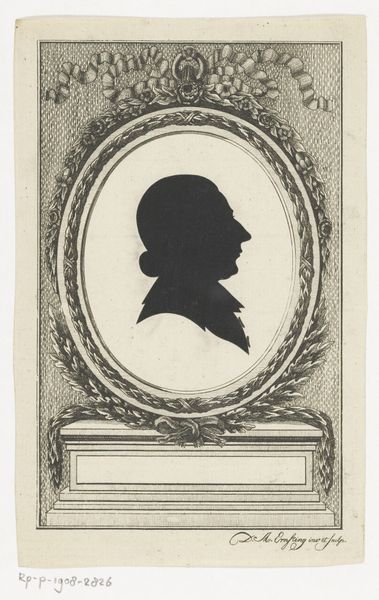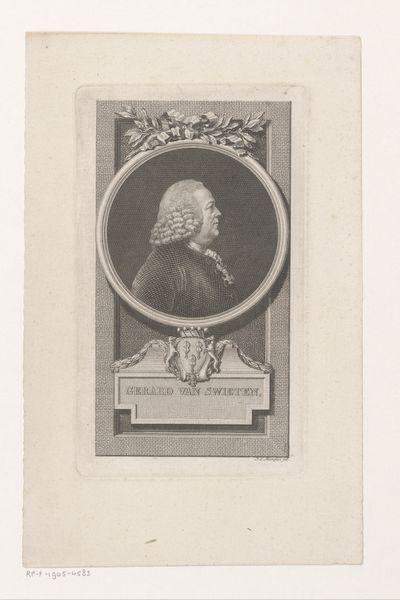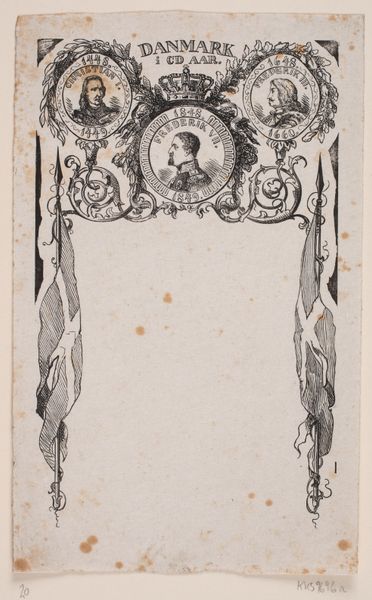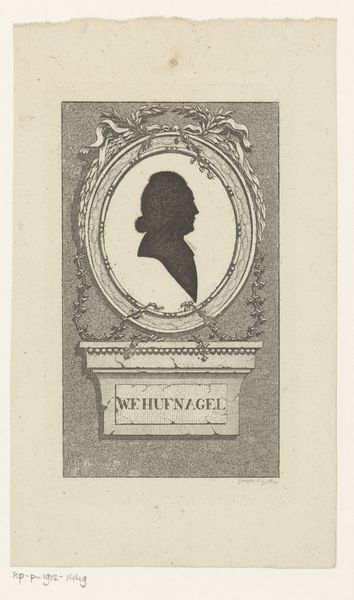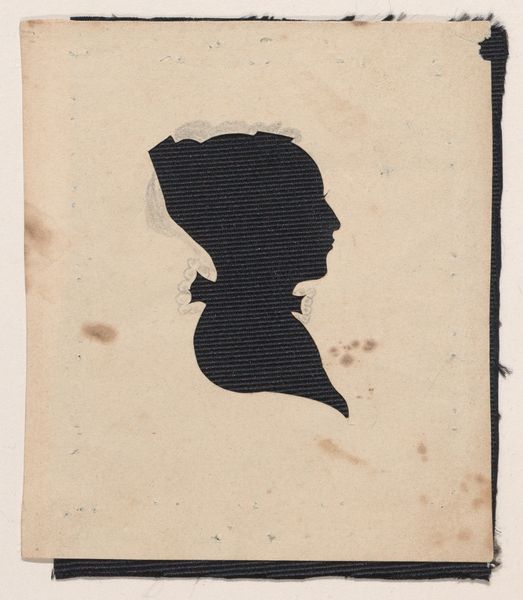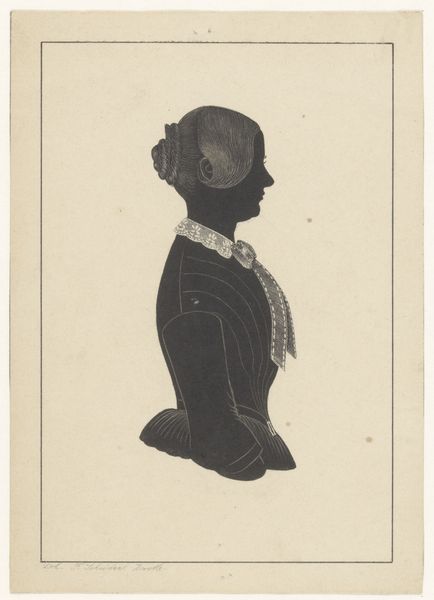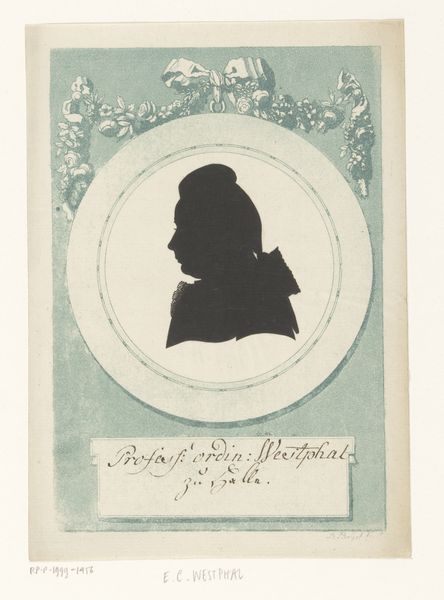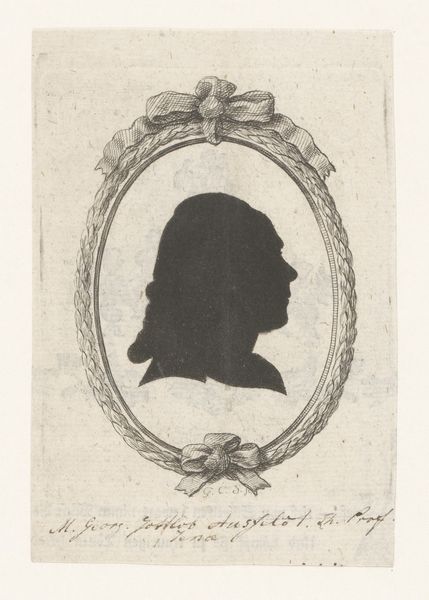
drawing, print, intaglio
#
portrait
#
drawing
# print
#
intaglio
#
geometric
#
line
#
decorative art
Dimensions: Plate: 8 1/8 × 5 3/16 in. (20.7 × 13.2 cm) Sheet: 8 9/16 × 5 9/16 in. (21.8 × 14.2 cm)
Copyright: Public Domain
Curator: Wilhelm Ackermann created this intriguing portrait between 1784 and 1834, titled "Silhouette of Gräfin Coreth". It's currently held at the Metropolitan Museum of Art. Editor: Intricate! The first thing I notice is how much visual information is conveyed through what is essentially just the absence of material. A haunting shadow, meticulously framed by geometric ornamentation. Curator: Indeed. Silhouettes gained popularity for their relative affordability and speed. This particular image being a print would have allowed for reproduction, speaking to the desire for widespread distribution and access, wouldn't you agree? Editor: Absolutely. Printmaking facilitated a kind of democratic portraiture. Though, look closer at the detail: the ornate frame surrounding the countess—bows, laurel wreaths, cascading floral embellishments. This implies the print still functioned within a system of social distinction and value. Curator: Good point. Consider the enduring appeal of the silhouette, its simplicity allows it to transcend time. It’s not about surface details but the essence of the individual—it's almost an archetypal portrait, immediately identifiable across cultures. The countess is now simply an emblem, freed of personality to fulfill a purpose in the symbolic order. Editor: Interesting. From a purely material perspective, I wonder about the labor involved. The precision of the etching—that must have taken a trained hand and specific tools, connecting us to the artisan's process. Curator: The skill is undeniable, connecting it with craft, tradition, the enduring desire to immortalize ourselves or to memorialize someone departed, or something no longer with us. Editor: It makes you think about the constant push-and-pull of art: democratized production versus signals of class. I guess some things never truly change. Curator: Perhaps what changes are the vessels in which that is conveyed. Editor: Food for thought! This piece gives me a new appreciation for how materials and symbolic representation can intertwine.
Comments
No comments
Be the first to comment and join the conversation on the ultimate creative platform.
